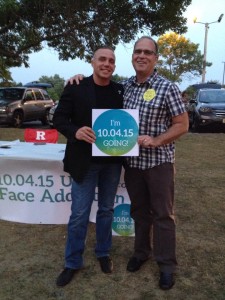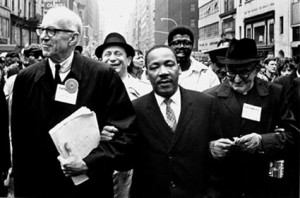As his favorability numbers continue to plummet in NJ and his polling numbers hover in the single digits in New Hampshire, Governor Christie gave a State of the State address in Trenton today that was full of his typical bluster and bravado and soaring rhetoric and devoid of specifics. I am only going to respond to his statements about addiction and mental health policies in this piece, as I’ll let other experts react to what he said about the economy and education in their respective forums. I’ve been a critic of this Governor for a long time, and I went public with those criticisms after he delayed the release of the NJ Heroin and Opiate Task Force Report. I’m going to look at this piece by piece. The Governor’s words will appear in bold black.
Today, I’m asking you to join me in doubling down on our state’s fight against drug addiction. There are few things that I’ve worked on harder as Governor or that I believe in as strongly as this.
I can’t speak to whether he believes super strongly in the fight against drug addiction, but I fervently disagree that he has worked hard on this. The following list is damning:
1) In 2012, he vetoed the Good Samaritan Law. It would take lots of ground work by community activists like Paul Ressler, Patty DiRenzo and Linda Surks, dozens of editorials and the near overdose of Bon Jovi’s daughter in NY state to convince the Governor to change his mind and sign the Overdose Protection Act in May of 2013. In between his veto and signing, several hundred people died from overdoses.
2) His office did not provide any help when a group I was a part of (from 2010 – 2012) tried to open a Recovery Charter High School in Newark. Despite getting $500,000 from the federal government, his office was unresponsive to our requests for help. When the department of education denied us for a 2nd year in a row in 2012, we reached out to his office again and received no response.
3) He has neither visited nor acknowledged nor helped raise money for the NJ Recovery High School in Union, NJ. I can only guess this is because it is championed (and named after) by a nemesis, Democratic State Senator Ray Lesniak.
4) In fact, the Governor recently vetoed an overwhelmingly popular bill that would have established 3 state-sponsored recovery schools.
5) The Star Ledger’s Tom Moran wrote that “the number of addicts admitted to treatment has dropped on his watch, according to the “daily tracker” run by his own Division of Mental Health and Addiction Services. State spending on addiction has dipped as well.”
In 2013 we brought in the drug court program to provide mandatory treatment to first-time, non-violent, non-dealing drug offenders.
There is some lying, some exaggerating and an omission here. Drug Courts have existed in NJ for over a decade. Governor Christie did sign off on a bill that expanded the eligibility to more offenders, but he also did not provide additional funding (read that last sentence again).
Narcan has now been administered more than 7,500 times through this program – and we’ve achieved the first decline in overdose deaths in our state in four years.
I’m a huge fan of Naloxone (the drug that is in Narcan) and I’m glad it is getting distributed more and more. Again, this distribution was made possible by local activists and forward thinking law enforcement leaders. The Governor dragged his feet on this. And opiate-overdose deaths increased from 741 in 2013 to 781 in 2014, so there hasn’t been a decline. Unless the Governor already has the data from 2015 handy (if so, that begs the questions (a) why hasn’t it been released and (b) how come he was able to get this data so easily when he claims everything else takes so much time), it’s obvious that Christie lied.
And last July, we instituted a single point of entry for people to gain access to treatment, and more than 30,000 calls have already been made by people looking to connect with drug treatment programs. Not dozens of calls to try to find help; just one call, to one place. Now that’s the way government should work for those in need.
That’s true. This was proposed in our Task Force Report that was delivered to the Governor in the fall of 2013. The vice-chair, Eric Arauz, wrote that recommendation and it was carried out by the NJMHA. The report was published in 2014. It took the Governor 16 months to implement a phone line – is that “the way government should work for those in need?”
Today I’m announcing an expansion of one of our most promising anti-addiction efforts, the Recovery Coach Program. This month, the Department of Human Services is launching a treatment intervention pilot program in hard-hit counties for people recovering from drug overdoses. The specialists leading these interventions are often in recovery themselves, and they’re deployed to emergency rooms so they can provide guidance, support and referrals for treatment. With the benefit of their own experiences on the path to recovery, these recovery coaches can step in at the moment when victims of drug use are often at their most vulnerable and when support is most needed.
Stephen Stirling of the Star Ledger reported that “this program was spearheaded by the Ocean County Prosecutor, and began last year.” So he’s taking a lot of credit here that shouldn’t go to him. Also, I’m a bit wary of Recovery Coaches. Their current prescribed role of helping people that have been hospitalized after a Naloxone reversal find treatment is perfect. However, Recovery Coaches are a cheaper, less educated, less professionalized, and less experienced group than the Licensed Alcohol and Drug Counselors (LCADCs). Recovery Coaches require little training and no supervision – it is imperative that they be used for very specific purposes with clear guidance. There is a shortage of LCADCs in the state and it has an effect on the quality of treatment.
Today, I’m very proud to announce a historic financial commitment of more than $100 million to increase access to care for mental health and substance use.
This is the most significant point. He should have led with this. The big question is if it is $100 million additional dollars per year (this would be .2% of the state budget, a pittance, but totally acceptable to me), or is it $100 million over 3 years, or 5 years or 10 years (over several years is more likely). He didn’t get specific. Specifics are the Governor’s Kryptonite.
We’re going to provide more competitive reimbursement rates for services and providers. Nearly two years ago I commissioned Rutgers University to analyze the characteristics of our most expensive Medicaid patients. What they found was totally clear. Within the top 1 percent of the most-expensive Medicaid patients, more than 86 percent have a mental illness, substance abuse issue, or both. If we can help people get access to coordinated care for their physical conditions, mental health and addiction issues, we can deliver more effective treatment and lower the long-term cost to the state.
Good. My friend Glenn Duncan wrote an amazing piece about the problems of Medicaid reimbursements and how programs can’t provide treatment to a huge number of people who need it. Increasing the amount of money that Medicaid pays for inpatient and outpatient treatment will help thousands of people in NJ who have mental health and/or addiction problems. The “coordinated care” for all of those issues is straight out of Obamacare. Straight out of it (I took a health care policy class in the fall of 2014, and we spent half of the semester on the Affordable Care Act). Christie likes this aspect of Obamacare. Too bad he’s too much of a coward to tell the GOP primary voters that.
I propose today that we re-open Mid-State as a fully dedicated, certified drug abuse treatment facility for New Jersey prison inmates. The victims of addiction deserve treatment, whether they’re in the community or incarcerated. If we can break the cycle of addiction anywhere, we should break it.
Awesome. We can’t look at drug policy issues without looking at criminal justice issues. The GOP is going to be more effective on criminal justice reform than Democrats (who have always feared appearing soft on crime). I just don’t want to see the Governor turn the running of it over to a for-profit company. The half-way houses that Governor Christie’s friends own are rife with problems. Let a non-profit or the state run it. It can be modeled after the program Governor Jim McGreevey runs up in Jersey City. Governor Christie and Governor McGreevey are buddies.
______
Last summer, I wrote about Governor Christie’s failures and how Romney’s campaign in 2012 was horrified with how Mr. Christie acted like he was Tony Soprano. Several political experts have written about how Christie has no shot at the Presidency, and I agree with them. That said, he will continue to be our Governor for another 2 years, and here are some specific tasks and programs that can actually address the addiction scourge and mental health problems that plague our state (I wrote about some of these in that aforementioned late summer piece as well):
(1) Expand the drug courts and fund them.
(2) Develop and implement a prescription drug education program to be taught to students throughout NJ, starting at age 10.
(3) Decriminalize marijuana.
(4) Mandate the prescription drug monitoring program (recently, he signed a bill that requires providers to check it every 3rd time, which is actually real progress).
(5) Consider early release of non-violent drug offenders who were given harsh sentences for possession of drugs (the Vera Institute of Justice estimates that it costs NJ between 50 and 60 thousand dollars to incarcerate someone here).
(6) Incentivize the creation of supportive housing for people with mental health and/or addiction disorders. Those houses need to be licensed or regulated though, as otherwise they’ll be full of abuse and neglect and will just add to the current problems.
(7) Speak out on behalf of the NJ Recovery High School in Union County. It bears Senator Ray Lesniak’s name (they hate each other), and by doing so it would show that the Governor can rise above petty feuds. It will also help get the word out about the school, which is suffering from low enrollment, despite the obvious need for it to exist.
At first glance, Governor Christie talks a good game. But a closer examination reveals that Mr. Christie appears to have issues with the truth, a poor memory, questionable follow through and a predilection for hurling personal insults at people. His speech today was more for the people of New Hampshire than New Jersey. In February, they’ll show him that they believe him as little as Garden Staters do. We all deserve better.



